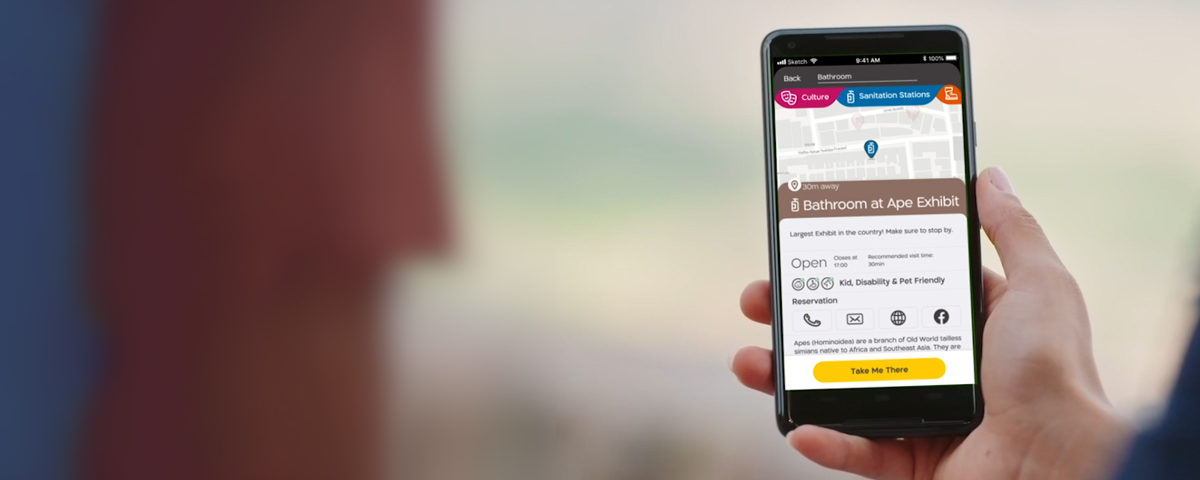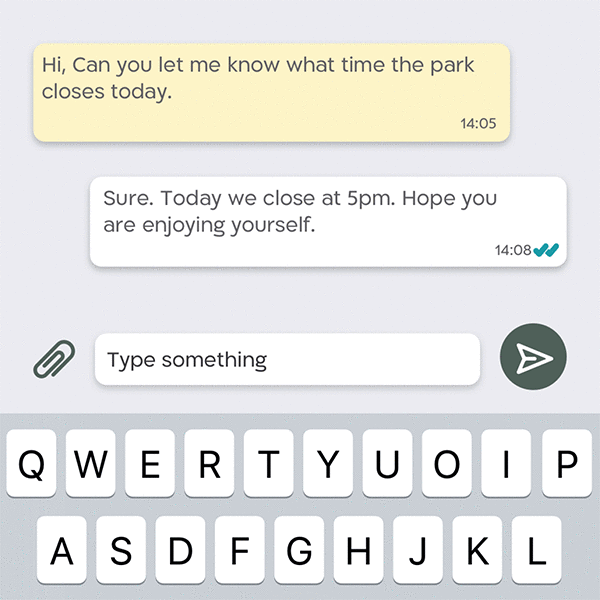As the initial shock of the COVID-19 crisis and lockdown is starting to pass, tourism destinations and attractions are beginning to turn their focus to the future. Many destinations in Asia have already started to reopen and European and North American locations are starting to plan to resume their operations.
The past few years have seen more and more destinations adopting travel-tech solutions to enhance their visitor experience. Now, these same SMART tourism technologies can be adapted to help face the challenges of COVID-19.
The core challenges that destinations face relate to enforcing social distancing and implementing hygiene protocols so as to keep their visitors and staff safe. Typically, destinations are looking at limiting capacity, spacing out queues to allow 2 meters between patrons, encouraging online bookings, and requiring PPE/masks for visitors and staff. Destinations are also encouraged to close indoor attractions and cancel events that generally attract large crowds. While these are all good practices, travel tech currently on the market offers additional solutions that are more efficient, more dynamic, and often are more cost-effective.

Limiting Visitor Capacity
Many government authorities are imposing strict limits on the number of visitors an attraction can have. Destinations don’t have to rely on a person with a clicker at the gate counting entrances (which is impractical for destinations with multiple points of entry in any case) to ensure compliance. Instead, they can use technological solutions that monitor the number of people in a defined area. This type of surveillance technology also eliminates the need to count people as they leave letting destinations know instantly when they can admit additional visitors.
Enforcing Social Distancing
Many destinations are requiring online payment and advance reservations in order to avoid queues at the entrance but they can go much further than this. Once inside, they should be offering visitors varied digital trails and experiences which encourage them to spread out and not crowd together at the most well-known spots.
Live-maps can show destinations where their visitors are at any given point in time, and allow staff to intervene in the event that they spot over-crowded spaces. And they can also be used by visitors to let them see the location of other people. This allows them to plan their routes to avoid close contact, in much the same way that social GPS apps help drivers avoid traffic jams.
Encouraging Adherence to Regulations
Push notifications allow destinations to send reminders directly into visitors’ cell phones reaching them wherever they are. Alerts grab people’s attention far better than posted signage which we quickly become blind to. It is also possible to prominently mark handwashing and sanitizing stations directly in GPS maps and send location-triggered alerts when users are close so that travellers can easily find them.
Protecting Your Staff
Many traditional recommendations for social distancing require staff to enforce it. But this means exposing your staff to increased risk in order to prevent risk to your visitors. A much better way is to use remote tech to communicate with travellers wherever possible, reducing face-to-face contact between staff and visitors.
This can be done with live 2-way chat that lets travelers contact staff with questions or concerns wherever and whenever they want. They could even become partners in enforcing hygiene standards by reporting if an area needs cleaning.
Instead of guided tours, destinations can consider turning to self-guided tours that use GPS navigable maps, photos, videos, and additional information. As an added bonus, instant translation can make these tours available to visitors in more languages than a human can typically offer.
In some recent cases, staff trying to enforce social distancing and mask-wearing in parks and similar locations have been met with hostility and even violence. There is no need to expose employees to this. Instead, push notification reminders and live chat let staff speak directly to visitors without getting too close.
Maximizing Revenue Despite Decreased Tourism
Reopening under all of the limitations demanded by this situation both reduces a destination’s income and increases their expenses. It is therefore important for destinations to find ways to maximise the income from each visitor. Push notifications, targeted advertising, and direct personal fundraising appeals sent to a visitors’ cell phone are all ways to make reopening more financially viable.
SMART Tourism’s Moment
In many ways, SMART tourism was designed for this moment. It centralises operations which allows fewer employees to serve more guests – just what social distancing requires. It helps visitors get the information they need faster, which can be critical in uncertain times. And it provides more opportunities for sales and promotions which is never more important than when destinations are under the kind of financial pressure they are currently experiencing. An investment in SMART tourism will pay dividends and is a cost-effective and innovative solution for normal operations and in times of crisis.
By Sarah Hein, Marketing Director, WishTrip
Article Summary: SMART tourism is the key for to reopen the Tourism industry and begin the process of financial recovery following COVID-19. Sarah Hein, WishTrip’s Director of Marketing lays out the technologies available to help destinations and attractions enforce social distancing, maintain local health authority guidelines, and protect both visitors and staff.
You may also be interested in…
- Time for airlines to revisit new-and-improved virtual reality
- The current thirst for virtual travel and its role in future travel planning
- Contactless Hotel Operations Have Moved from Nice-to-Have to a Necessity





There’s a saying that no size fits all, but this guide is helpful to destinations which are reliant of visitors number as they look forward to seeing a bounce back of tourism.
I have shared this post with my colleagues at Responsible Tourism Company [https://www.responsibletourismcompany.com/] and hope they too share with other tour firms in addition to calling on our Uganda government to work with private sector employers to safeguard jobs and livelihoods of nationals during and after this global pandemic